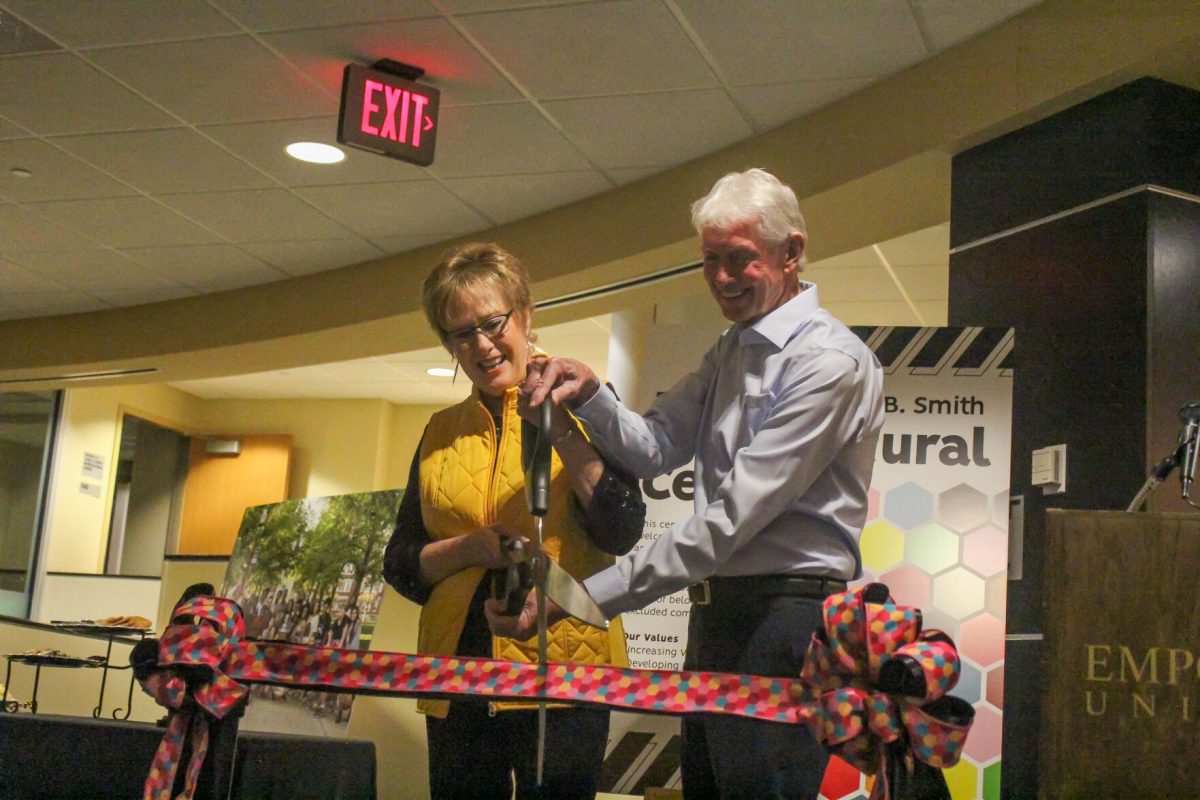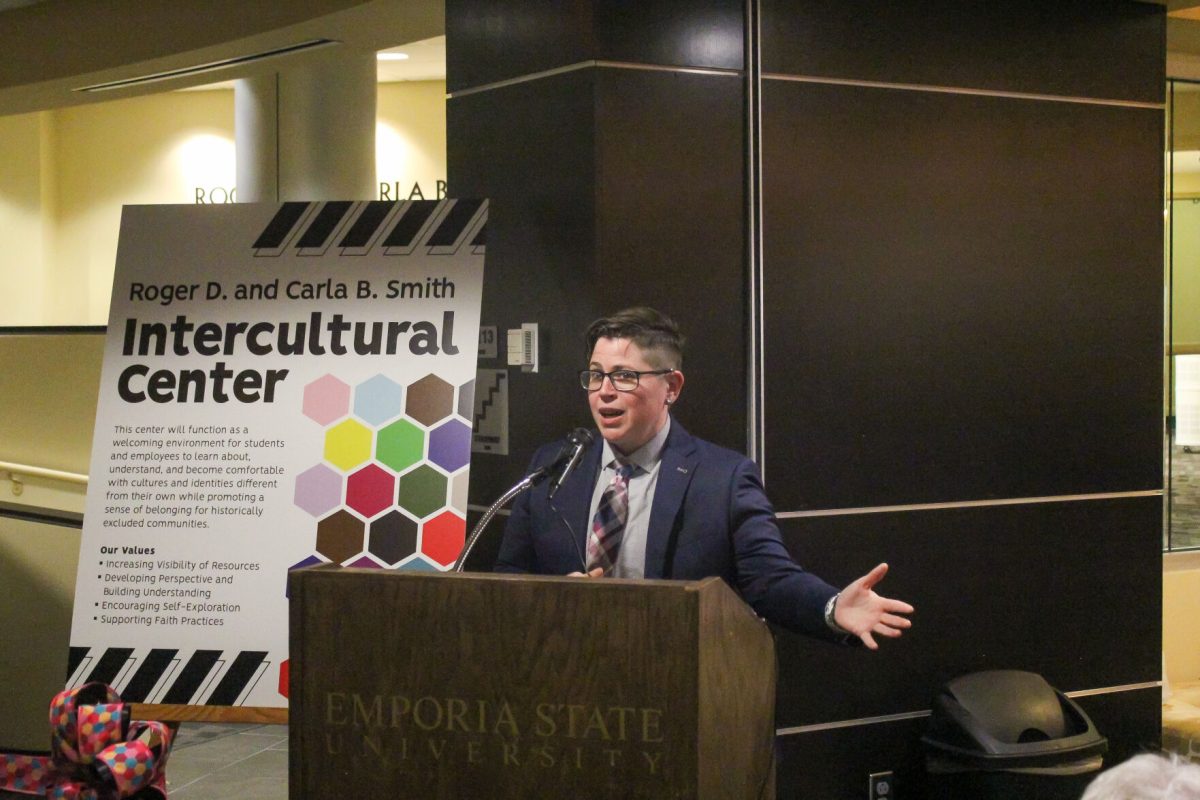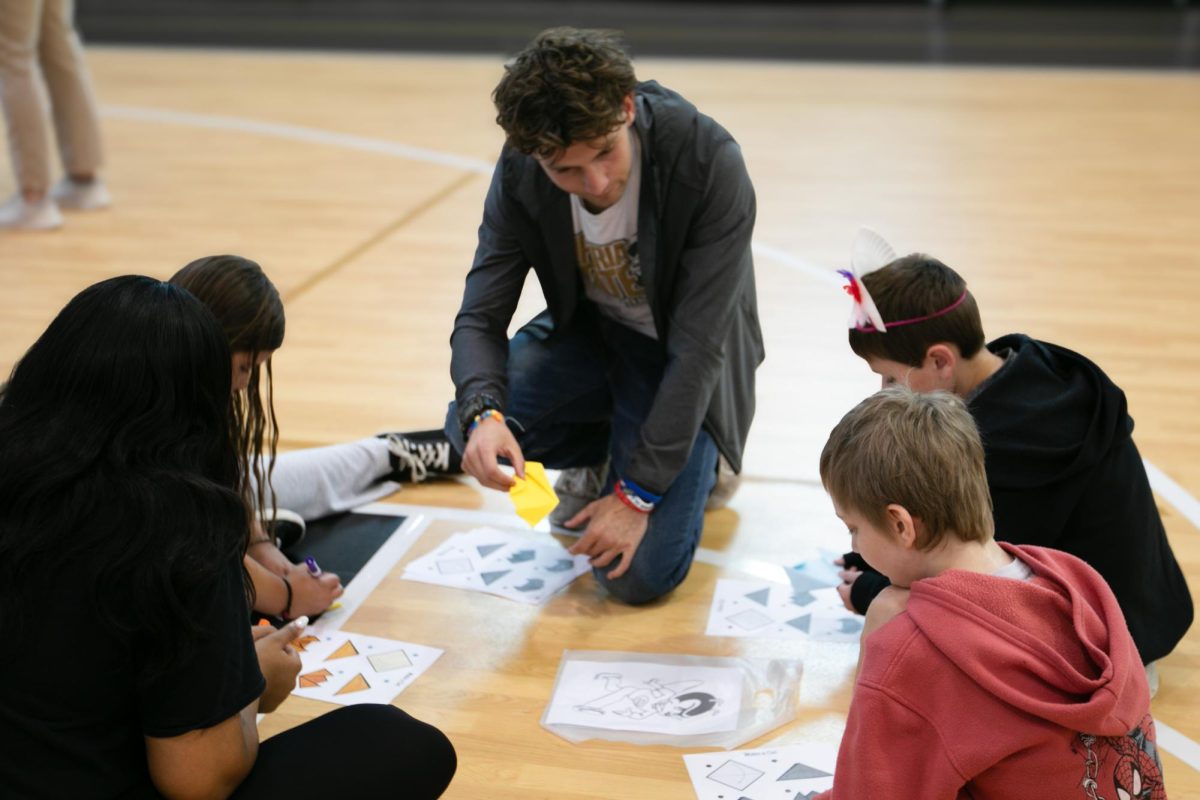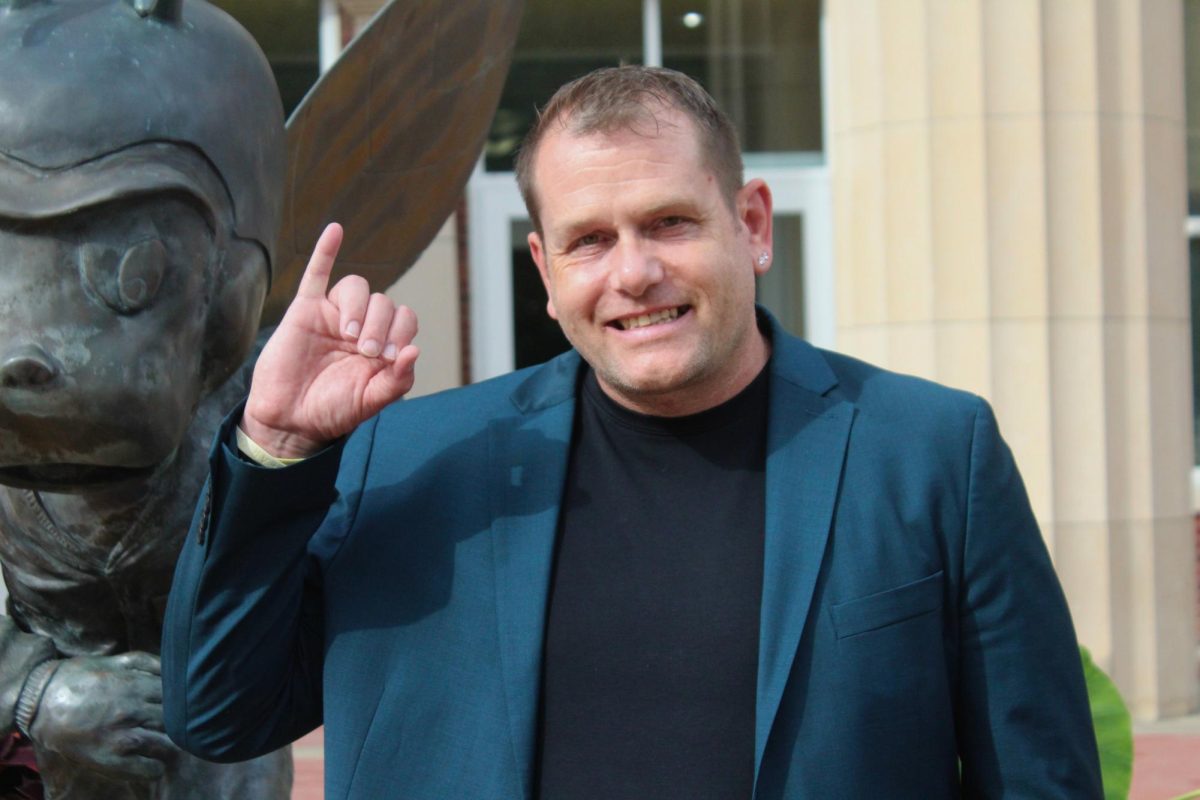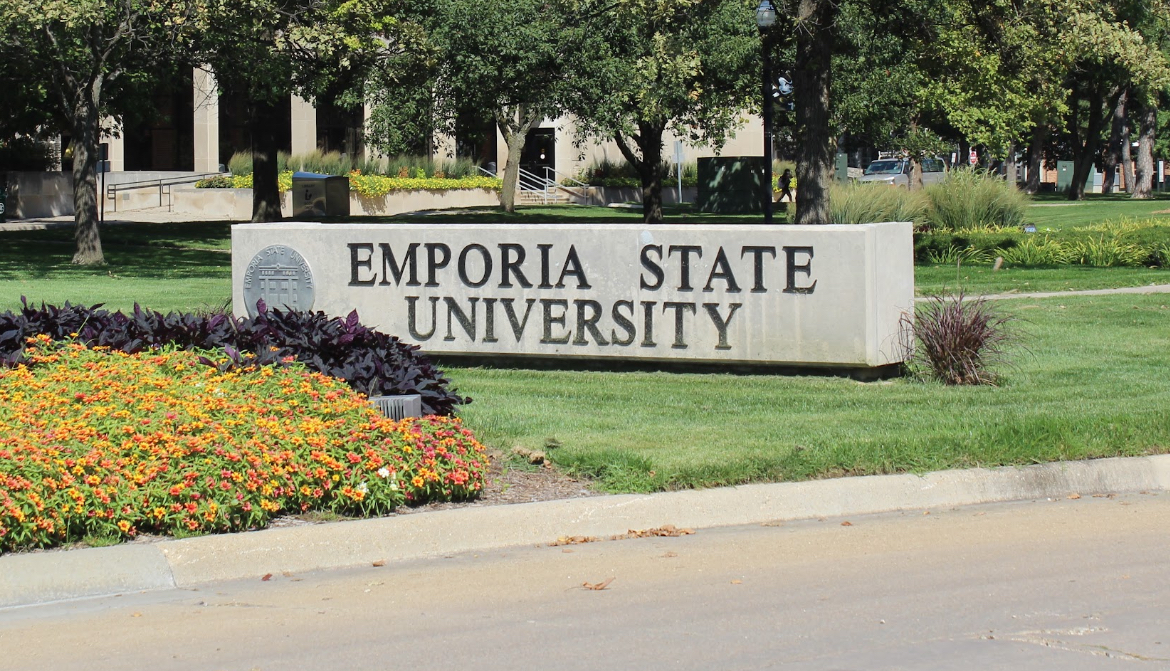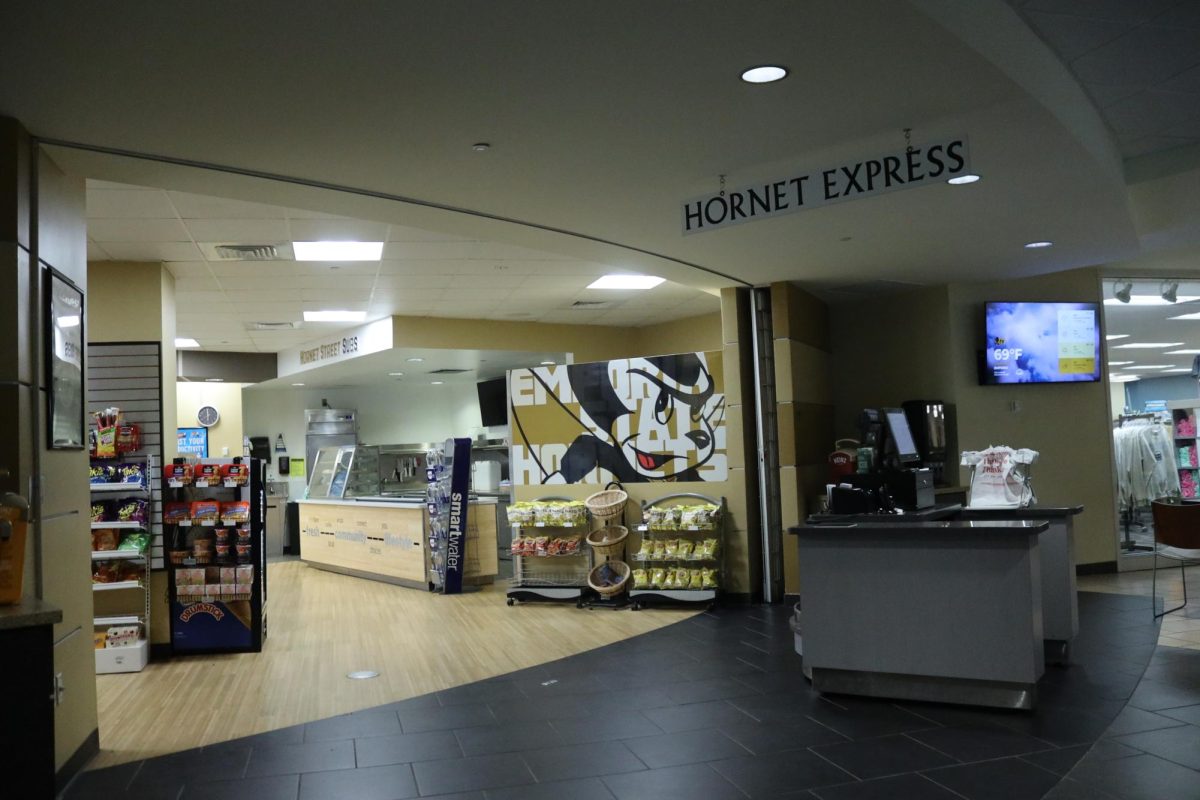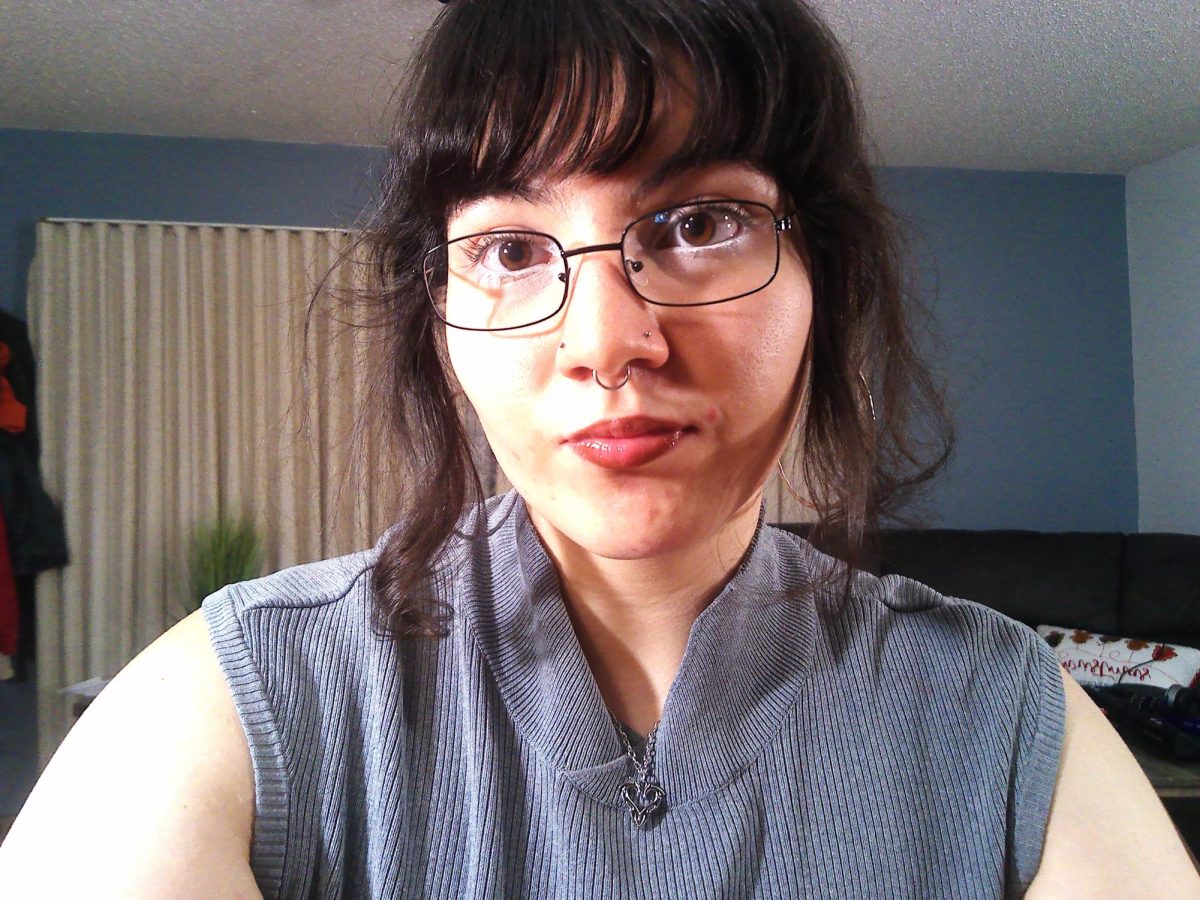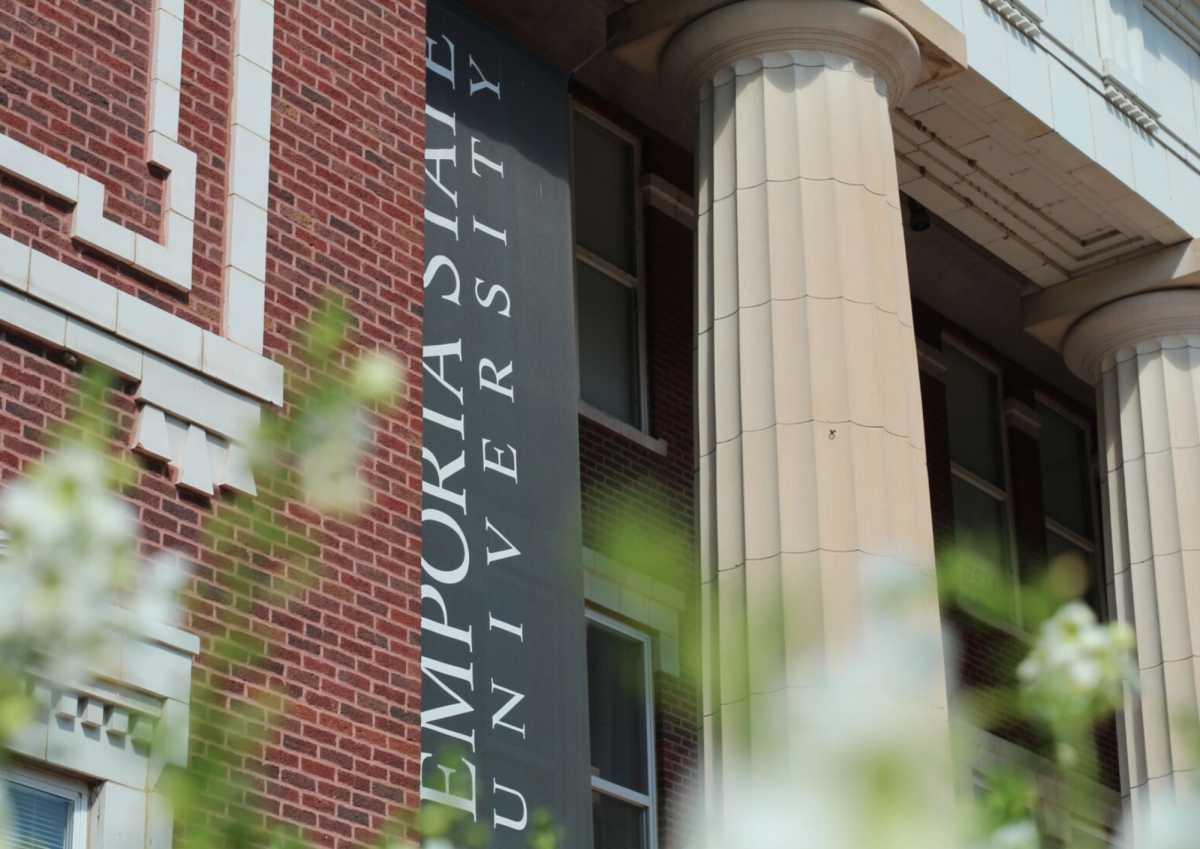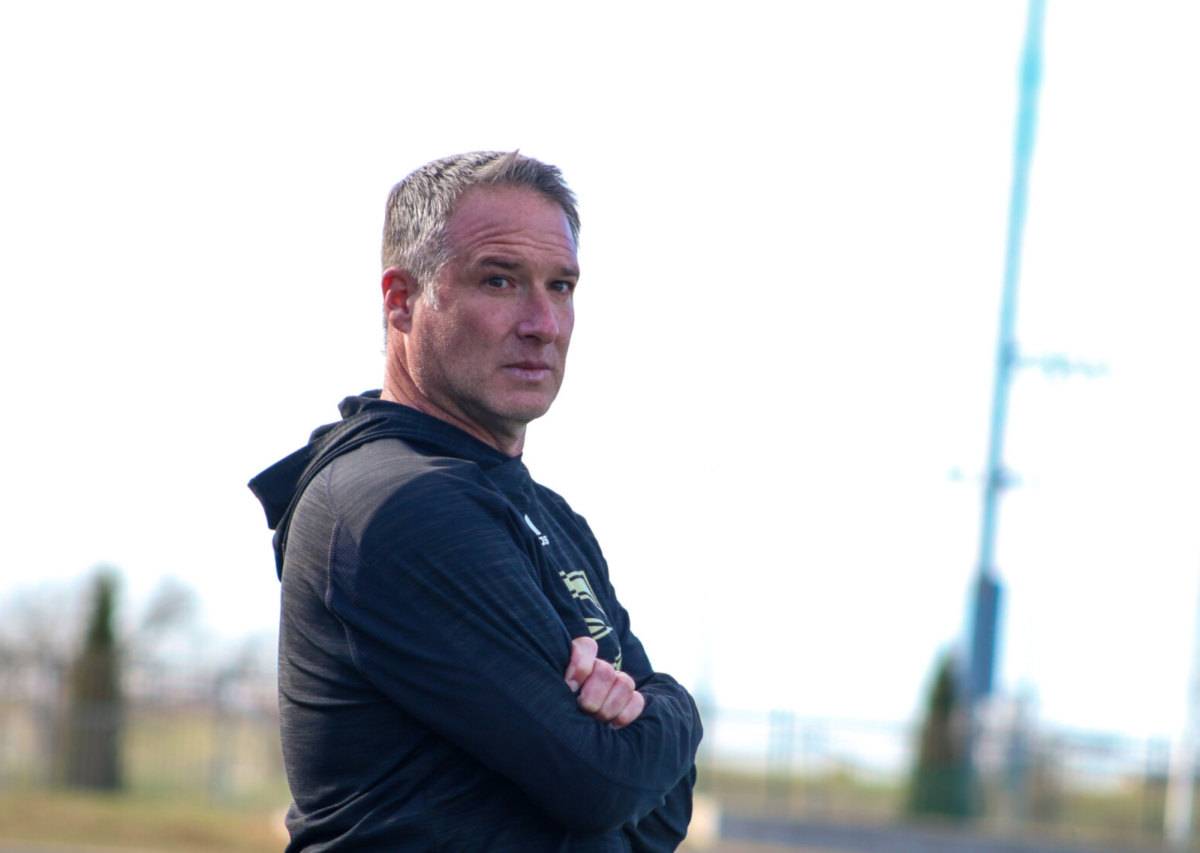The Roger D. and Carla B. Smith Intercultural Center opened its doors to visitors for the first time at the ribbon-cutting ceremony on Nov. 13. The event was hosted at the site of the new campus resource, adjacent to the Center for Student Involvement in Memorial Union.
The ceremony featured a range of speakers, including ESU staff, community members and students affected by the construction of the center. Nyk Robertson, Senior Diversity Officer and Assistant Dean of Interdisciplinary Studies, opened the event by highlighting the significance of the occasion and the purpose of the Intercultural Center.
“Today marks not just the unveiling of a space, but the beginning of the exciting chapter in the life of our university,” said Robertson. “It is with great pride and anticipation that we open the doors to a space designed to foster cultural identity, encourage leadership, and provide opportunities for critical reflection, informed action and advocacy…We are building a community here that celebrates and embraces our differences while connecting us through our shared commonalities.”
California residents Rev. Ken Daigle and JD Schramm provided a generous donation for the construction of the Schramm-Wright Interfaith Chapel, a key feature of the Intercultural Center where community members of all faiths are encouraged to worship according to their beliefs. Daigle provided a brief invocation for the space, and Schramm later took the microphone to describe his friendship with the late Tim Wright and the meaning of the Interfaith Chapel.
Schramm and Wright met at ESU as fraternity brothers in the short-lived Delta Epsilon organization. They had “the most unlikely of friendship”; the two men had different political affiliations, faiths, sexual orientations and perspectives on life. Yet, they formed a friendship that lasted until Wright’s death in 2019, informing Schramm’s message to reach out to people with different perspectives.
“My invitation to you is, who in your world is different than you that you don’t know as well as you wish you did?” said Schramm. “Who is it that you could reach out to and begin a friendship, or at least begin a conversation, and see what you might have in common, despite all the things that you have that are different?”
Exposure to diverse perspectives continues to affect the lives of Emporia students. In her speech, senior criminology major and Bolivian international student Camila Viorel emphasizes the importance of expanding one’s awareness of their community and the world around them.
“I have seen firsthand the challenges my friends and other students face in finding a place where they truly belong, and I’ve also witnessed the toll that a lack of community can take on so many people,” said Viorel. “This is why having spaces like this is so crucial on campus, so we can provide students with a place where they can feel supported, where they can belong, and also a place for an opportunity for education for everyone.”
When the speeches concluded, the center’s namesake and donors, Roger and Carla Smith, were given an oversized pair of scissors to cut the ribbon.
Although much of the space is still in the process of being arranged, the Intercultural Center was staged to allow attendees to tour its facilities and give attendees an idea of how the rooms will be used.
A main lobby conducted visitors past conference rooms that will be available to identity-based student organizations in need of space to conduct meetings and storage rooms for those organizations to keep any event materials. Beyond that lies a suite of offices for Diversity, Equity and Inclusion campus representatives and the Interfaith Chapel. The final space is the lounge, which contains a space for relaxed conversation and a library soon to be filled with books exploring diverse experiences.
“The Roger and Carla Smith Intercultural Center provides a welcoming and open environment where people can learn, reflect and engage with one another on a deeper level,” said Robertson in their speech. “Whether it’s through dialogue, shared experiences or collaborative action, this space is where critical conversation can take place, where people can challenge assumptions and where we can unite in our shared pursuit of a more just and equitable world.”

